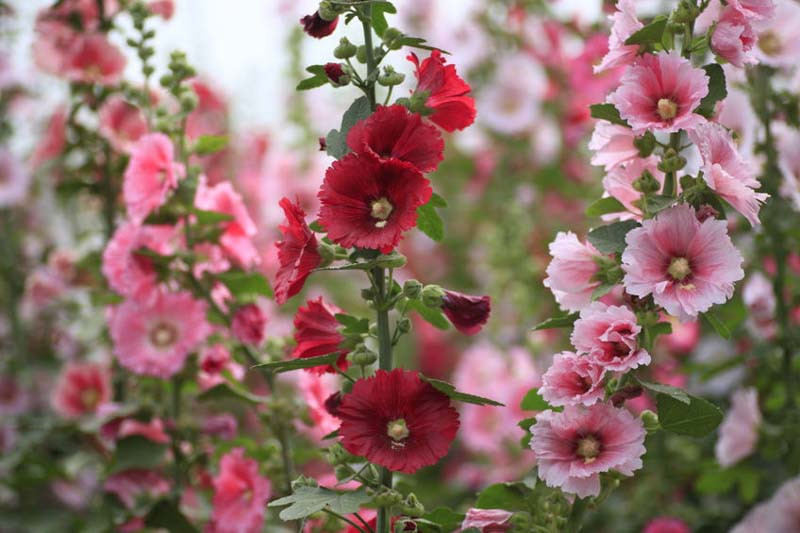Alcea (Hollyhock)
Alcea, commonly known as hollyhock, is a delightful flowering plant often found in traditional cottage gardens. Noted for its dramatic height and charming, colorful blossoms, Alcea is a favorite among garden enthusiasts.
- Habit: Alcea is a biennial or short-lived perennial, typically reaching heights of 5-8 feet (1.5-2.4 meters). This plant is famous for its tall, spire-like inflorescences studded with large, single or double trumpet-shaped flowers.
- Hardiness: Alcea falls within USDA hardiness zones 3 through 9. Alcea is particularly robust in its resistance to cold, but it does appreciate some protection from strong, damaging winds.
- Flowers: The flowers of Alcea are its standout feature. They bloom in various colors, including white, yellow, pink, red, and purple, and often display in mid to late summer. The blossoms provide a nectar source for bees and hummingbirds, contributing to biodiversity in your garden.
- Uses: Due to its height, Alcea is ideally suited for the back of a border in a garden bed or against fences, walls, or buildings where its magnificent spires can stand tall. The vibrant flowers also make excellent cut flowers.
- Benefits: Alcea is not only a beautiful addition to any garden but also offers some benefits for wildlife. The nectar-rich flowers attract a variety of pollinators, helping to boost local ecosystems.
In addition, Alcea has been used in traditional medicine. The plant’s roots have been used for their anti-inflammatory properties, while the flowers have been used in soothing skin treatments. However, always consult a healthcare professional before using any plant medicinally.
Alcea’s towering elegance, combined with its relative ease of care, makes it an ideal choice for gardeners looking to add a dash of old-world charm to their landscapes. However, it can self-seed and spread in the garden. To prevent excessive spreading, deadhead spent flowers and remove any unwanted seedlings.

